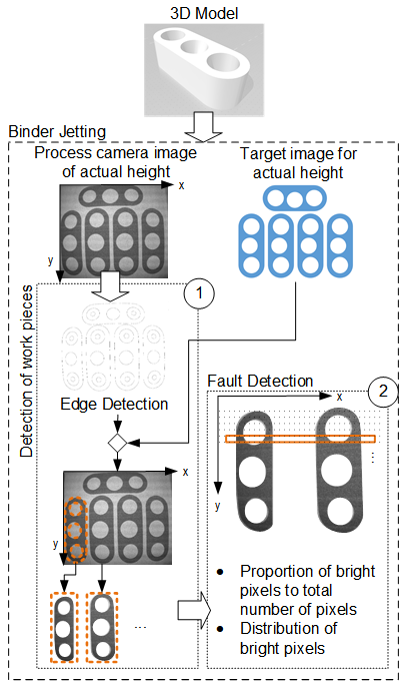Monitoring the core component printhead for binder jetting processes
Errors in printed components are expensive and time-consuming (Additive Manufacturing/3D printing). If, for example, the delivery date cannot be met, the overall reputation suffers and the delivery reliability is doubted. In binder jetting, the condition of essential machine components has so far only been checked by hand before the printing process. This is time-consuming and inaccurate. Furthermore, many job crashes cannot be prevented as a result. Consequently, an easy-to-integrate module for binder jetting processes must be developed that enables monitoring to be carried out without significant hardware outlay.
